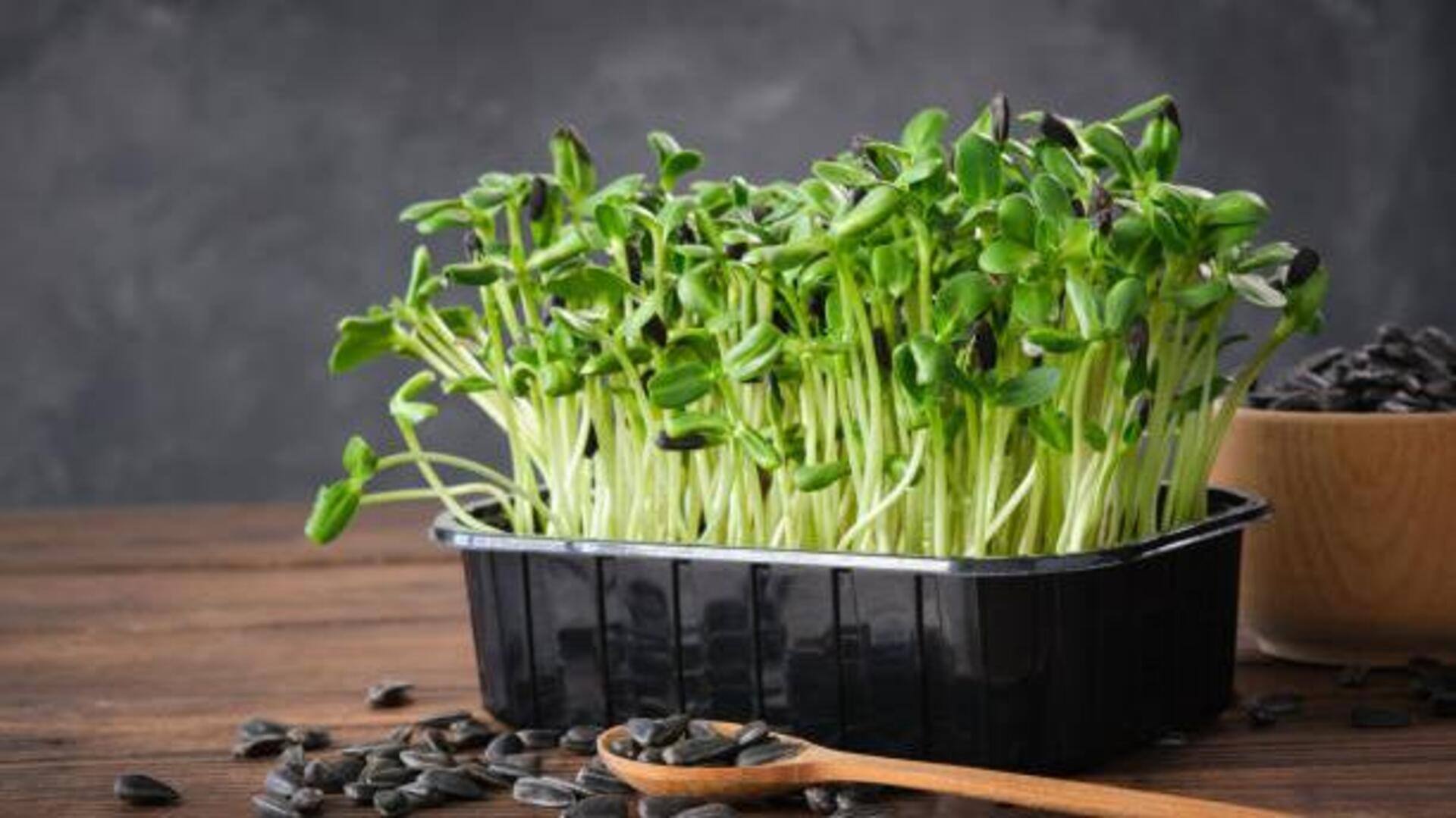
How to grow microgreens at home
What's the story
Growing microgreens at home is not just rewarding, but also a sustainable way to introduce fresh greens into your diet. These tiny plants are packed with nutrients and can be cultivated in small spaces, making them ideal for urban dwellers. The right techniques can ensure a bountiful harvest of microgreens. Here are five essential hacks to help you cultivate these nutrient-rich greens at home.
Tip 1
Choose the right seeds
Choosing the right seeds is key to successful microgreen farming. Choose organic seeds that are specifically labeled for microgreens, as they usually have high germination rates. Sunflower, radish, and broccoli seeds are popular options. Make sure that the seeds are untreated and free from any chemicals or pesticides to ensure healthy growth.
Tip 2
Use quality growing medium
A good growing medium gives your microgreens essential nutrients and support. Coconut coir, peat moss, or a high-quality potting mix work excellently. These mediums retain moisture well and allow proper drainage, preventing root rot. Spread an even layer of your chosen medium in trays or containers before sowing the seeds.
Tip 3
Maintain optimal light conditions
Microgreens need plenty of light to flourish. Place them near a sunny window where they can receive at least four hours of direct sunlight every day. Alternatively, you can use LED grow lights if natural light is insufficient or inconsistent in your area. Place the lights about 12 inches above the plants to effectively mimic natural sunlight conditions.
Tip 4
Water consistently but sparingly
Proper watering is key to healthy microgreen growth. Keep the growing medium consistently moist but avoid overwatering, as that can lead to mold development or root issues. Use a spray bottle or fine mist sprayer to gently water the seedlings once or twice daily as needed based on humidity levels and temperature.
Tip 5
Harvest at the right time
Timing is key when it comes to harvesting microgreens for best flavor and nutrition content. Most varieties are ready within seven to 21 days after sowing when they grow one inch tall with fully developed cotyledons (seed leaves). Use clean scissors or shears during harvest time by cutting just above soil level without disturbing roots below ground level.